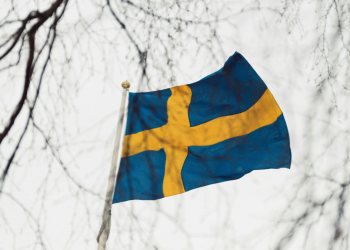Lots of ink has been spilled since the US Supreme Court overturned their monstrous Roe v Wade and Casey v Planned Parenthood decisions that invented a federal constitutional right to abortion. The decision in Dobbs v Jackson Women’s Health Organization reached one year ago has been credited, or blamed depending on one’s perspective, for a variety of political outcomes which are discussed below.
But there are two things that both sides of the abortion debate can agree on since Dobbs.
First, the issue of abortion is one of the most hotly contested political issues in the country. It was before Dobbs, and it remains so afterwards.
Second, and most importantly, both sides agree there have been far fewer abortions in the United States than would have occurred in the absence of the Dobbs decision.
No matter the political calculus, that fact is the most important to keep in mind in assessing the consequences of the decision. Tens of thousands of innocent children are alive today that would have been killed through abortion had Roe and Casey not been overturned by Dobbs.
According to a comprehensive analysis by a pro-abortion nonprofit that collected data from abortion providers nationwide – including hospitals, clinics, private medical offices and virtual clinics – there were 32,000 fewer abortions in the USA in the six months after the Dobbs decision. The study compared data to the same months prior to the Dobbs decision.
What exactly did the Dobbs decision say? The Supreme Court majority said in a 5-4 vote that the Court’s prior decisions creating a federal constitutional right to abortion were wrongly decided and that there is no right to abortion under the US Constitution.
The immediate effect of this ruling was to return abortion regulation to the states, where it has become a hot political topic. Already, abortion has effectively been banned in thirteen states — Alabama, Arkansas, Idaho, Kentucky, Louisiana, Mississippi, Missouri, Oklahoma, South Dakota, Tennessee, Texas and West Virginia. All of these states are considered “red” (governed by Republicans) and many had previously enacted abortion bans that were stopped by Roe and Casey and thus went back into effect. Other states had on their books what are called “trigger bans” that took effect when Roe and Casey were overturned.
An additional seven states have prohibited abortion after a certain period of time – ranging from six to eighteen weeks of pregnancy.
Not surprisingly, pro-abortion groups have turned to state courts (and in some cases federal courts) to attack laws banning or restricting abortions. Indeed, abortion restrictions have been stopped by judges at least temporarily in seven of the aforementioned states and are currently in various stages of litigation.
Meanwhile, “blue” states run by Democrat politicians have acted to strengthen access to abortions in their jurisdictions. Most notably, states like California, Illinois and New York have declared themselves to be “abortion sanctuary” states and are openly encouraging women from outside their borders to avail themselves of abortions in their states. Illinois is surrounded by states that restrict abortions, and they report a six-fold increase in the number of abortions performed on women who live elsewhere (from 5% of total abortions pre-Dobbs to 30% now).
All told, at least 25 states have enacted laws protecting access to abortion in their states.
Of interest, the overall finding of 32,000 lives saved in the first six months following Dobbs shows the impact of various state actions. Abortions are down by 95% in the red states that prohibit or sharply limit them, but up slightly in the blue states that have acted to protect or expand abortion access.
Voters have also been asked to weigh in on the abortion issue. Indeed, abortion was on the ballot in six states in 2022 in the aftermath of the Dobbs decision – Kansas, Kentucky, California, Michigan, Montana and Vermont. The pro-abortion side won all six contests.
In Kansas and Kentucky, the pro-life community tried to pass measures establishing that nothing in their state constitutions creates a right to abortion or requires the state to fund abortions. This is to prevent judges from inventing a state right to abortion. Unfortunately for Kansas, their vote was in August 2022, mere weeks after the Dobbs decision which played right into the false echo chamber created by the left and their allies in the media that the Supreme Court and Republicans were trying to ban all abortions. The Kansas pro-life measure failed badly, 41% Yes to 59% No.
The Kentucky measure was on the November ballot and was much closer, 48% Yes to 52% No. The other four measures on the ballot were all similar, to guarantee a constitutional right to abortion as part of “individual reproductive freedom”. These measures passed by large margins in California, Michigan and Vermont. In Montana, the vote was on a “Born Alive” personhood amendment to ensure protections for babies born after an abortion attempt or other procedure. It was defeated 47% Yes to 53% No.
Democrats have decided that abortion is the strongest issue they have to use against Republicans in electoral contests, and they do so regularly and with some success. They portray Republicans as wanting to ban abortions in all cases, including in cases of rape, incest or when the life of the mother is at risk.
Nationally, over 60% of voters say they mostly support abortion rights and a similar percentage say they oppose the Supreme Court’s Dobbs decision. These are strong positions politically for Democrats, and they have used them effectively to drive up enthusiasm and donations from their base.
Democrat leaders credit the abortion issue as being critical in limiting the GOP margin in 2022 House elections. They plan to make it a central issue in their 2024 electoral messaging.
At the same time, polls show that the American people do not support the Democrats’ position of abortion on demand up to birth. Indeed, two-thirds of voters favor restrictions or bans on abortion after the first trimester of pregnancy.
While the effect of the Dobbs decision was to return the regulation of abortion to the states, it did not prevent future national regulation of abortion.
It is highly unlikely that a divided Congress as exists today would ever pass a law either reinstating Roe or banning or limiting abortion nationwide. Proposals to do so are essentially “messaging bills” designed to help define the issue for voters and to generate enthusiasm and donations from their respective base of voters.
As noted at the outset, the issue of abortion was one of the most contentious political issues of our time before the Dobbs decision, and it remains so today.
But politics are of little concern to the 32,000 innocent souls who are alive today in the first six months after the Dobbs decision. Tens of thousands more babies have also been given the gift of life in subsequent months
Personally, I will gladly accept any political fallout from a righteous decision that every year saves the lives of tens of thousands of unborn children in our country. The gift of life, one granted us by the Creator of the Universe, is immeasurably more important than the margin of control in the House of Representatives or any other political consideration.




















Discussion about this post